Chicory might be one of those plants that you’ve probably seen a thousand times but never knew what it was. It is extremely common along roadsides in many areas of the country, and I’m sure that you’ve passed it by a time or two. What you may not have known is that chicory is an edible and medicinal plant, and the leaves, flowers, and roots can all be used. Since it’s such a common plant, foraging for chicory is usually pretty easy. Once you know what it looks like you will probably start noticing it everywhere!
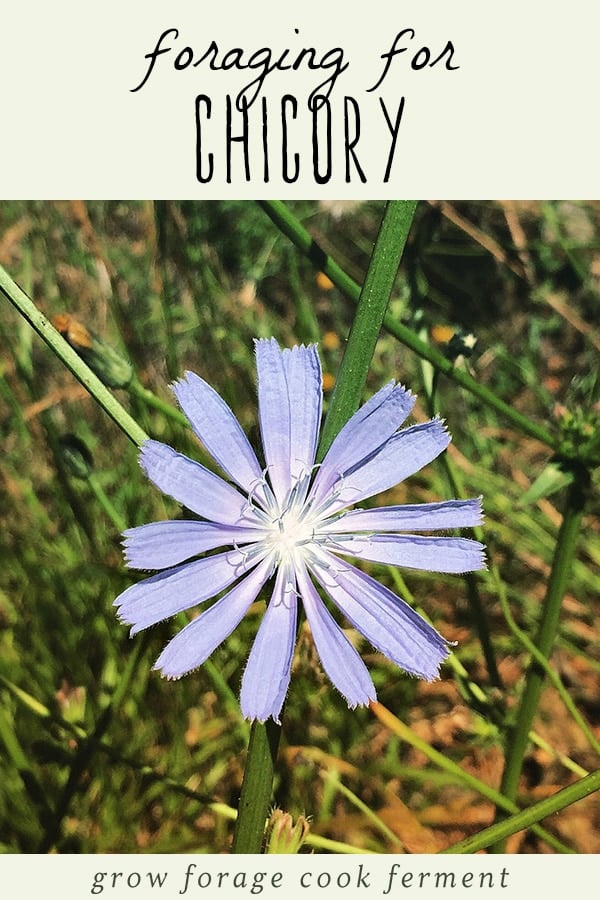
Want to save this post for later?
Wildcrafting Weeds
If you want to learn more about the edible and medicinal weeds that surround us and how to use them, check out my eBook: Wildcrafting Weeds: 20 Easy to Forage Edible and Medicinal Plants (that might be growing in your backyard)!
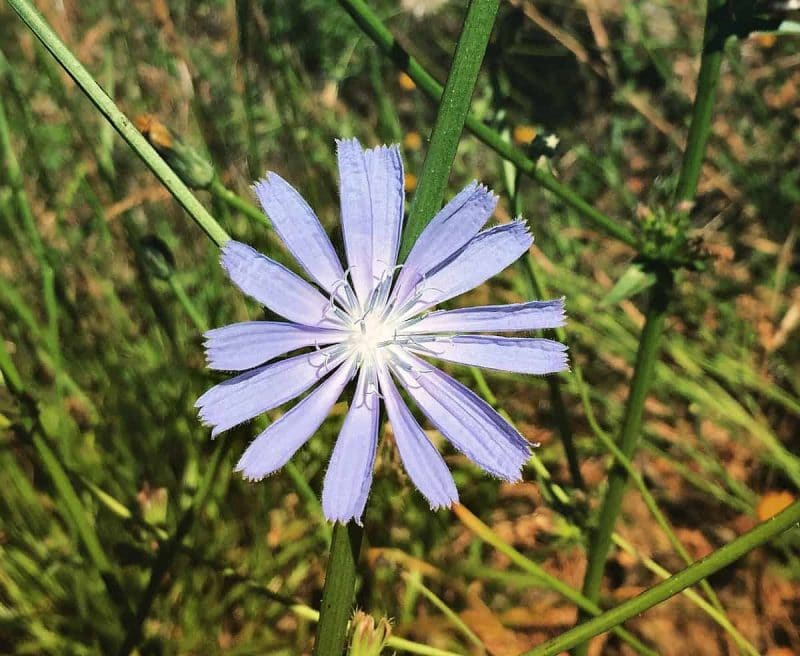
Foraging for Chicory
One thing to watch out for when foraging for chicory is its location. It’s not wise to gather any plant that is growing along roadsides, as it is likely to be contaminated with exhaust and oil.
You also want to be aware of areas that could be sprayed with herbicides. Since chicory often grows in disturbed areas and is sometimes considered a weed, or even an “invasive” species, there is a higher likelihood of this. Do a little research, and make sure that you are collecting in an area free of toxins.
Chicory is a perennial plant in the dandelion family, and is closely related to the cultivated varieties of endive and radicchio. The young leaves of chicory can be eaten raw and are a great addition to salads.
The leaves are bitter, so a little goes a long way, but it’s those bitter compounds that make them very good for you. They can also be cooked, which will release some of the bitterness.
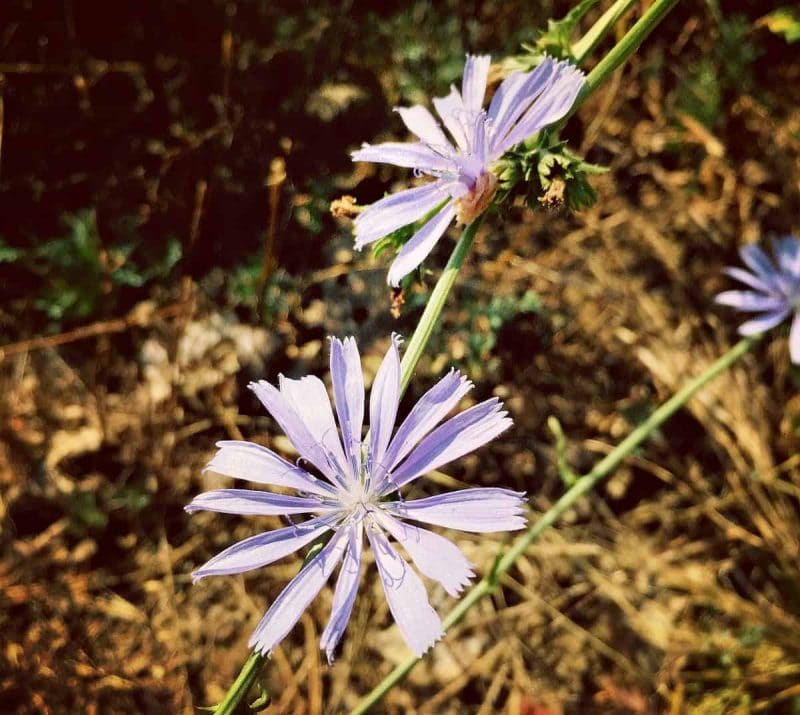
Chicory typically blooms between July and October. The flowers are bluish purple, and grow along a long stalk. They will typically open in the morning, and on warmer days I’ve seen all the flowers closed up by early afternoon.

Uses for Chicory
Chicory flowers are also edible and can be eaten raw in salads. They are medicinal as well, and have been used in folk remedies for centuries. They may have immune boosting qualities and might help to relieve stress. Chicory flowers are also one of the 38 Bach Flower remedies.
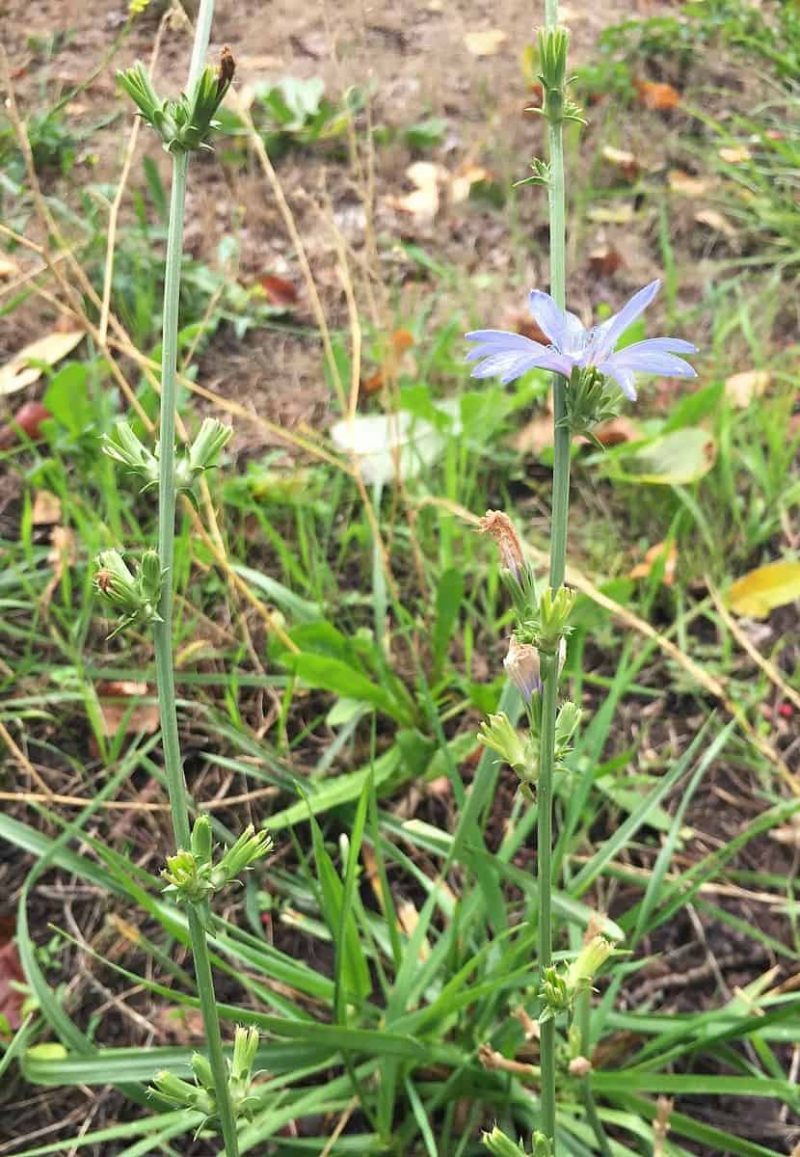
Wild chicory is perhaps best known for its root. Foraging for chicory root is usually done in the fall, as with other edible and medicinal roots like dandelion, valerian, and burdock.
It can be a bit tricky to harvest chicory root, as they often grow in hard packed ground. If I’m collecting roots, I try to find areas with loose soils, but this is not always possible. Digging a bit around the root increases your chances of getting more of it.
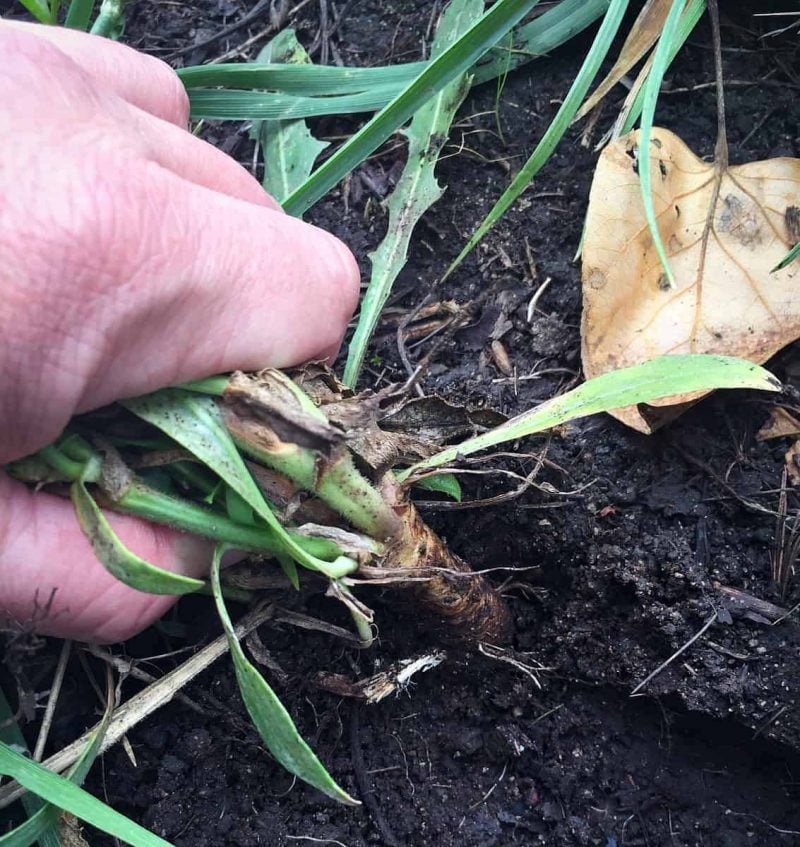
I am often unsuccessful at getting the entire root, but the way I look at it is at least there’s a pretty good chance that this plant will grow back next year from the remaining root!
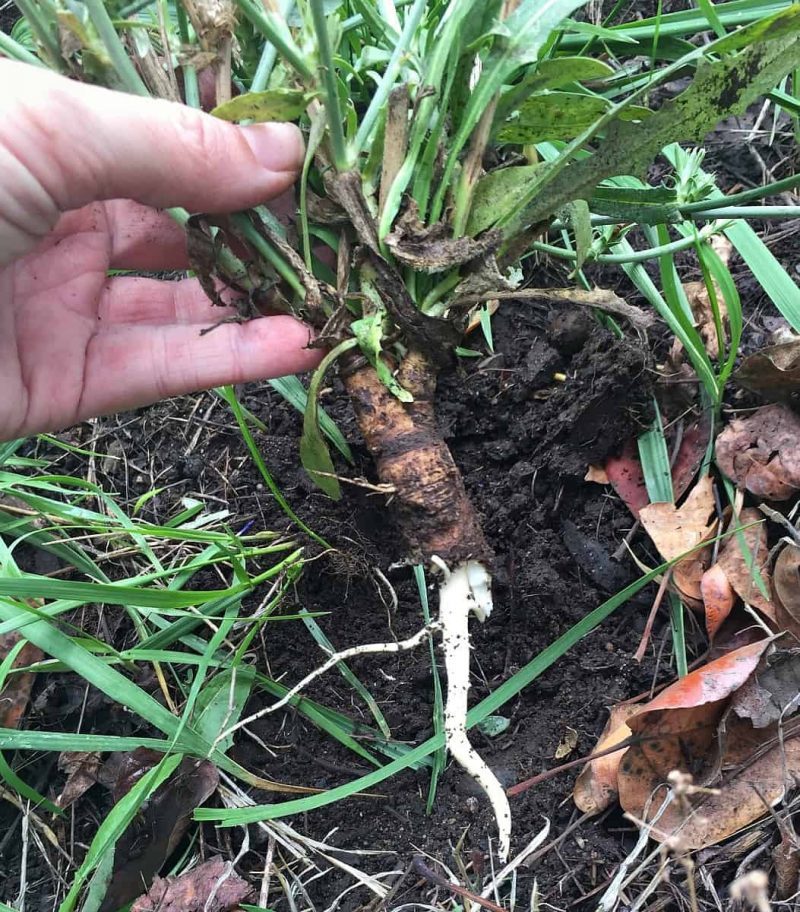
Chicory root is edible and full of inulin, an excellent source of fiber and prebiotics. It is commonly roasted and used as a coffee like substitute, minus the caffeine.
These recipes for Chicory Mocha and Dandelion and Chicory Chai are tasty ways to reap it benefits.
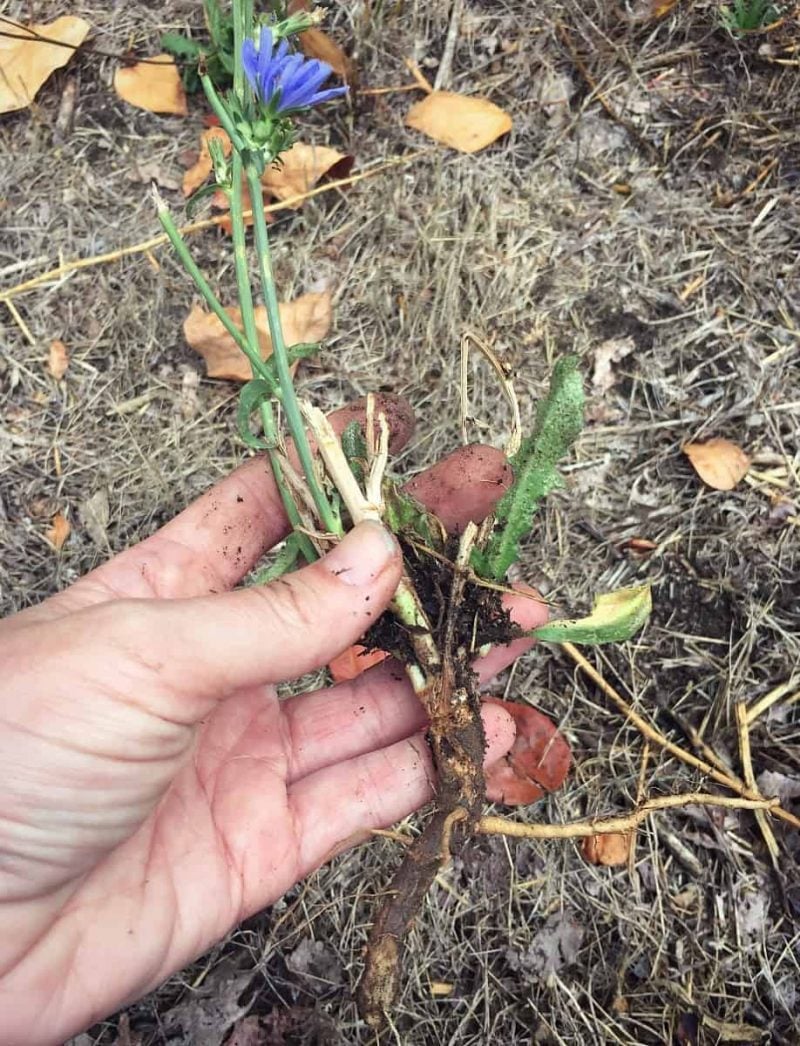
Chicory root is also known for being toxic to parasites, which makes it great for livestock forage. It is also used as a flavoring in beer, which got me thinking a little. Maybe I’ll try making a fermented chicory brew one of these days!
If you can’t find chicory, or if it’s the wrong time of year for foraging, you can always buy roasted chicory root from Mountain Rose Herbs (my favorite source for high quality, organic herbs).
I hope this inspires you to go foraging for chicory!
Foraging for Wildflowers
Check out these other lovely flowers that are good for foraging!


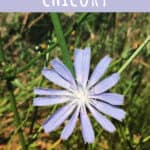
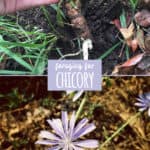

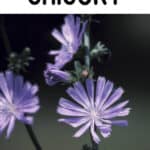


Hi, I have come upon some Desert Chicory and cannot find information about it. Its flower is yellow. Do you know anything about it…?
Hi there. I’m sorry, I don’t!
Thanks, anyway!
Do you know if the roots from chicory greens that look like a head of lettuce can be used in the same way as wild chicory?
Hi Denise. I’m honestly not sure and couldn’t find much info to support that the roots of chicory are as beneficial medicinally as the wild species.
I am trying to find the best way to dry the flowers so I can use them this winter. I normally make tea from the flowers to use in Jelly. Can I put everything but the sugar and pectin into the tea and then can it for use later? Basically use the flower tea and lemon juice then can it or water bath it?
You probably could. To be honest, I’ve never considered canning tea and it sounds like a lot of work. Could you dry the chicory on a flower drying screen and store them in a mason jar?
Is that the same as the wild plant we call Bachelor Buttons – the flower looks the same or is that something else?
Hi Hilda. No, I don’t think they’re the same plant.
Hi Hilda, bachelor buttons are a different plant, but the flowers do resemble chicory flowers!
Ɓatchelor buttons are cornflowers.. makes a salad look pretty!
where can i get seeds? i want my own. thanks
Here you go: Strictly Medicinal Seeds Chicory
Different subject.
When is the best time to harvest the Heal- All herb?
Is it best when it is still growing with purple flowers or after the flower is dried. I have it growing now in my gardens.
I use it as a hot tea drink in the winter when I’m not feeling well.
I just happen wanted to try to get some chicory around where I live in a housing area where they had cleared land and it grows wild outback. and I took some an am trying to dehydrate it to dry it and trying to roast some in a small oven. going to try to do my best I even got some more out where it grows some grows in loamy soil so I left the plant and took the root with me Pyrer I had pulled some roots up were smaller so they are dried and now I will take a picture of the roots I pulled out this evening where I live in the housing area.and put them on FB as I made a video about them in my workshop. I have been wanting to try to them too in coffee. for a long time. where I was in Quebec where the grows here I wanted to pull them but I had no place to roast them. Also, Chicory grows in the northern part of Pakistan which those live there eat the greens
I have the blue chicory and 2 white chicory. Have an old wildflower book that shows pink flowers. wonder if anyone ahs ever seen a pink one. use it for spring greens along with dandelion, dock, coltsfoot, etc.
You said: “Maybe I’ll try making a fermented chicory brew one of these days!”
Have you tried this yet? If so, how did it go? I’m really interested!
Thanks!
-Casey
Hello. So I am always on the look out for weeds and flowers growing wild in my area. I spotted these blue/purple flowers everywhere I finally stopped and snagged some. I grabbed mostly flowers. I couldn’t get the root. But was able to get a few long cuttings. Could I put the longer cuttings in water? And root them? So I could plant and grow some I can obtain the roots? Let me know. Please thanks. I’ve read and enjoy your website. Thanks Jenna
You might be able to grow them by taking a small knife along and digging as far down the root as you can get. Get a few of these to experiment with. These roots are tough and resilient. I often have a big one snap off while weeding and a few months later it is growing away, sometimes several shoots will app ear around the broken root just to show me who is boss! Set some of these “crowns ” of the root in a shallow dish with a little water for a couple of days to help them re-hydrate. Or plant them all in a spot where the soil is deeply worked and somewhat rich, but not too wet. Tamp firmly. They will grow in crowded conditions, but you will get roots that are easier to dig if they have some space around them.
Everyone talks of roasting them but never explain how or how long
Thank you! Chicory is on my “find out when to dig” list and I hadn’t made the time to look it up. We grow chicory in one of our wildlife food plots for the grouse and turkeys. There’s more than enough so I’m going to dig a few roots for myself.
When I break a root while foraging I look at it as it’s either going to grow back, which is nice, or it will die and feed the microherd in the soil, also nice.
I’m trying to figure out when this was originally posted. I’m in SW Washington state, just North of Portland, and I’m thinking it’s too late here for any wildflowers. We just harvested rosehips and Elderberries, so I’m thinking it will be too late for Chicory here.
Does anyone know?
Hi Morgana, I actually just wrote this article today (10/6/16)! I live in southern Oregon, and there are definitely still chicory’s in flower right now. I took some of these photos yesterday. They will probably start to die back soon though.